17 june 2015

A still made by Israeli publication Mako highlights the unarmed Palestinian targeted by an Israeli sniper.
“Got it! Wow, got it. Got video, too!”
This is what the voice on this video is heard exclaiming just after a sniper fires a shot toward an unarmed Palestinian man in the occupied West Bank village of Silwad.
The video shows a person in the distance, apparently standing still and not involved in any kind of confrontation, falling to the ground as soon as the shot is fired.
The Israeli publication Mako says that the soldiers in the video appear to be from the Netzah Yehuda battalion, the same Kfir brigade unit whose members were caught on video brutally beating a Palestinian man from Jalazone refugee camp last week.
Gratuitous violence
The Israeli army spokesperson justified the shooting, claiming, according to Mako: “The film shows sniper fire toward the lower body of a central inciter in a violent and illegal disruption of the peace, which occurred in the village of Silwad, northeast of Ramallah. The shooting was done with permission by the sector commanders after the suspect threw an incendiary device and stones at the forces on the spot.”
But Mako says:
However, as can be seen in the film, the wounded Palestinian man has no incendiary device in his hand, no such device fell out of his hand when he was hurt, and he is not seen walking, running, or threatening the soldiers in the field. According to the colonel with whom we discussed this, a very experienced infantry officer, “the target is not threatening the forces in the field in a manner that requires operating the sniper, not according to military procedures.”
The unnamed colonel to whom Mako showed the video adds: “It is customary to put snipers at controlling points and they have a very specific role: to locate and destroy an armed person who threatens the forces, if such a person appears among the demonstrators, or take out of commission a demonstrator who presents a clear threat and endangers the life of forces in the field … unfortunately, it does not look like that is the situation in the film in question.”
In other words, even by the standards of the occupying forces, this shooting was a gratuitous act of violence.
Embarrassing Mako – and the officer it interviewed – seem more concerned however with the public relations damage the video could do, rather than the rights of Palestinians under occupation.
The colonel criticizes the filming style “which is more appropriate for Hamas terrorists or Syrian rebels than for an army like the IDF.”
“The trickling of such materials to the Internet is especially serious,” the colonel adds. “In this way you can see how the force operates, they’re exposing themselves to legal problems, and what they don’t understand is that this could get the whole country in hot water. Damage at a global level. It’s just stupidity.”
The colonel notes that the video “has started gaining speed over the last few hours and it looks like it has already started being published on foreign sites.”
He worries that it could hit world news programs “and then the party will begin.”
Who is the victim? It is impossible to tell from the video the identity of the victim of the sniper attack.
According to Mako, the video “was apparently shot last Thursday, during a demonstration in the village of Silwad.”
However local media have not reported incidents on Thursday. Typically, Palestinians in the village hold weekly demonstrations against the occupation on Fridays.
The Palestinian news agency WAFA reports that on Friday, two Palestinians in the village were injured by occupation forces who “raided several homes in the town, forced residents out and took over their rooftops, turning them into military outposts to target residents.”
According to the report, one youth was shot and injured and another was hit by a stun grenade.
During confrontrations in the village on 5 June, the 48th anniversary of the Israeli occupation of the West Bank and Gaza Strip, occupation forces injured three Palestinians with live ammunition in Silwad.
All three, one a child of 13, sustained bullet wounds to their legs, according to the Palestinian Centre for Human Rights.
Given that the people of Silwad are the constant targets of occupation forces and the settlers they protect, there has been no shortage of opportunities for the kind of violence depicted in the video.
Resisting land theft The presence of occupation forces in the area has nothing to do with any legitimate Israeli “security” concern but with protecting and promoting the theft of Palestinian land by and for settlers, in violation of international law.
Silwad villagers have seen much of their land stolen by Israeli colonists and have lived for years under severe movement restrictions by the occupation forces.
The settlement of Ofra, established in the mid-1970s, was built on lands seized from Silwad and the nearby village of Ein Yabroud.
According to the Israeli human rights group B’Tselem, the “built-up area of Ofra lies on land that is registered in the Land Registry under the names of Palestinians from the villages of Ein Yabrud and Silwad.”
“The existence of Ofra is responsible for extensive violations of the human rights of Palestinians living in the area,” B’Tselem adds.
More recently settlers from Ofra have stolen even more Silwad village land to build the “Amona” outpost, an act legitimized by Israeli authorities.
Ultra-Orthodox What is notable about Netzah Yehuda is that it is a recently formed Haredi or Ultra-Orthodox unit. Haredi leaders have strongly opposed a recent law requiring young men from the community, who had been exempt since the founding of Israel, to enter the army for the first time.
The video is therefore being approvingly circulated on some websites to show that Haredi men are capable of being just as ruthless as other enforcers of the occupation.
Dena Shunra contributed research and Hebrew translation.
“Got it! Wow, got it. Got video, too!”
This is what the voice on this video is heard exclaiming just after a sniper fires a shot toward an unarmed Palestinian man in the occupied West Bank village of Silwad.
The video shows a person in the distance, apparently standing still and not involved in any kind of confrontation, falling to the ground as soon as the shot is fired.
The Israeli publication Mako says that the soldiers in the video appear to be from the Netzah Yehuda battalion, the same Kfir brigade unit whose members were caught on video brutally beating a Palestinian man from Jalazone refugee camp last week.
Gratuitous violence
The Israeli army spokesperson justified the shooting, claiming, according to Mako: “The film shows sniper fire toward the lower body of a central inciter in a violent and illegal disruption of the peace, which occurred in the village of Silwad, northeast of Ramallah. The shooting was done with permission by the sector commanders after the suspect threw an incendiary device and stones at the forces on the spot.”
But Mako says:
However, as can be seen in the film, the wounded Palestinian man has no incendiary device in his hand, no such device fell out of his hand when he was hurt, and he is not seen walking, running, or threatening the soldiers in the field. According to the colonel with whom we discussed this, a very experienced infantry officer, “the target is not threatening the forces in the field in a manner that requires operating the sniper, not according to military procedures.”
The unnamed colonel to whom Mako showed the video adds: “It is customary to put snipers at controlling points and they have a very specific role: to locate and destroy an armed person who threatens the forces, if such a person appears among the demonstrators, or take out of commission a demonstrator who presents a clear threat and endangers the life of forces in the field … unfortunately, it does not look like that is the situation in the film in question.”
In other words, even by the standards of the occupying forces, this shooting was a gratuitous act of violence.
Embarrassing Mako – and the officer it interviewed – seem more concerned however with the public relations damage the video could do, rather than the rights of Palestinians under occupation.
The colonel criticizes the filming style “which is more appropriate for Hamas terrorists or Syrian rebels than for an army like the IDF.”
“The trickling of such materials to the Internet is especially serious,” the colonel adds. “In this way you can see how the force operates, they’re exposing themselves to legal problems, and what they don’t understand is that this could get the whole country in hot water. Damage at a global level. It’s just stupidity.”
The colonel notes that the video “has started gaining speed over the last few hours and it looks like it has already started being published on foreign sites.”
He worries that it could hit world news programs “and then the party will begin.”
Who is the victim? It is impossible to tell from the video the identity of the victim of the sniper attack.
According to Mako, the video “was apparently shot last Thursday, during a demonstration in the village of Silwad.”
However local media have not reported incidents on Thursday. Typically, Palestinians in the village hold weekly demonstrations against the occupation on Fridays.
The Palestinian news agency WAFA reports that on Friday, two Palestinians in the village were injured by occupation forces who “raided several homes in the town, forced residents out and took over their rooftops, turning them into military outposts to target residents.”
According to the report, one youth was shot and injured and another was hit by a stun grenade.
During confrontrations in the village on 5 June, the 48th anniversary of the Israeli occupation of the West Bank and Gaza Strip, occupation forces injured three Palestinians with live ammunition in Silwad.
All three, one a child of 13, sustained bullet wounds to their legs, according to the Palestinian Centre for Human Rights.
Given that the people of Silwad are the constant targets of occupation forces and the settlers they protect, there has been no shortage of opportunities for the kind of violence depicted in the video.
Resisting land theft The presence of occupation forces in the area has nothing to do with any legitimate Israeli “security” concern but with protecting and promoting the theft of Palestinian land by and for settlers, in violation of international law.
Silwad villagers have seen much of their land stolen by Israeli colonists and have lived for years under severe movement restrictions by the occupation forces.
The settlement of Ofra, established in the mid-1970s, was built on lands seized from Silwad and the nearby village of Ein Yabroud.
According to the Israeli human rights group B’Tselem, the “built-up area of Ofra lies on land that is registered in the Land Registry under the names of Palestinians from the villages of Ein Yabrud and Silwad.”
“The existence of Ofra is responsible for extensive violations of the human rights of Palestinians living in the area,” B’Tselem adds.
More recently settlers from Ofra have stolen even more Silwad village land to build the “Amona” outpost, an act legitimized by Israeli authorities.
Ultra-Orthodox What is notable about Netzah Yehuda is that it is a recently formed Haredi or Ultra-Orthodox unit. Haredi leaders have strongly opposed a recent law requiring young men from the community, who had been exempt since the founding of Israel, to enter the army for the first time.
The video is therefore being approvingly circulated on some websites to show that Haredi men are capable of being just as ruthless as other enforcers of the occupation.
Dena Shunra contributed research and Hebrew translation.
|
|

New footage of incident doesn't show Palestinian trying to take soldier's weapon as they claimed; IDF has yet to respond to new video.
Just three days after three IDF soldiers were sentenced for the allegedly unnecessary beating of a Palestinian being arrested during clashes near Ramallah, a full video of the incident was released by Palestinian sources Wednesday, showing no definitive proof that the Palestinian civilian attempted to take one of the soldier's weapons as the IDF claimed after initial investigations. An original video of the incident, which erupted on social media on Saturday, showed the Palestinian being thrown to the ground and hit in |
the face by one of the soldiers, but it did not reveal what led to the heavy-handed arrest, leaving room for speculation that the soldiers were justified at least in making the arrest.
The clip released on Wednesday however, documents in full, the curses exchanged between the soldiers and the Palestinian as well as one moment in which the civilian brushes up against a soldier, but does not seem to make an aggressive grab for his weapon. In addition to the questionable arrest tactics seen in the original clip, the full video shows one soldier forcing the Palestinian to the ground by hitting him over the back of the head with a rifle.
The full video reached the IDF on Wednesday afternoon, but no response or statement has yet to be released. Two of the soldiers who were documented in the film received a suspended sentence of 28 days in army prison on Sunday, while another soldier who was seen cursing was sentenced to 30 days confinement to the base. The company commander was also reprimanded.
The clip released on Wednesday however, documents in full, the curses exchanged between the soldiers and the Palestinian as well as one moment in which the civilian brushes up against a soldier, but does not seem to make an aggressive grab for his weapon. In addition to the questionable arrest tactics seen in the original clip, the full video shows one soldier forcing the Palestinian to the ground by hitting him over the back of the head with a rifle.
The full video reached the IDF on Wednesday afternoon, but no response or statement has yet to be released. Two of the soldiers who were documented in the film received a suspended sentence of 28 days in army prison on Sunday, while another soldier who was seen cursing was sentenced to 30 days confinement to the base. The company commander was also reprimanded.
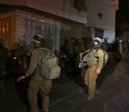
Several Israeli military vehicles kidnapped, on Tuesday at night, one Palestinian from the ‘Askar refugee camp, and another in Beta nearby town, in the northern West Bank city of Nablus.
Palestinian security sources said soldiers, stationed on the Za’tara military roadblock, south of Nablus, stopped and searched several Palestinian cars, investigated the ID cards of many residents, and kidnapped Mahmoud Ata Warrad.
In addition, soldiers invaded Beta town, south of Nablus, searched several homes and kidnapped one Palestinian identified as Firas Abdul-karim Farhat, 22 years of age.
On Tuesday evening, soldiers invaded Silwan town in occupied East Jerusalem, clashed with dozens of local youths, wounding five, and kidnapped one child. The army also fired gas bombs at home and cars.
Palestinian security sources said soldiers, stationed on the Za’tara military roadblock, south of Nablus, stopped and searched several Palestinian cars, investigated the ID cards of many residents, and kidnapped Mahmoud Ata Warrad.
In addition, soldiers invaded Beta town, south of Nablus, searched several homes and kidnapped one Palestinian identified as Firas Abdul-karim Farhat, 22 years of age.
On Tuesday evening, soldiers invaded Silwan town in occupied East Jerusalem, clashed with dozens of local youths, wounding five, and kidnapped one child. The army also fired gas bombs at home and cars.
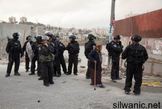
Israeli soldiers invaded, on Tuesday evening, Silwan town in occupied East Jerusalem, clashed with dozens of local youths, wounding five, and kidnapped one child. Soldiers also fired gas bombs at home and cars.
The Wadi Hilweh Information Center in Silwan (Silwanic) has reported that the soldiers fired rubber-coated metal bullets, mildly wounding five Palestinians.
Soldiers also fired gas bombs at a number of homes, and cars, causing scores of residents to suffer the effects of tear gas inhalation, in addition to property damage to the targeted homes and vehicles.
Silwanic said the clashes took place after the soldiers invaded the town, through its main road, after closing it for more than thirty minutes, denying the Palestinians the right to exit or enter their own town.
The soldiers also broke several homes, and searched them, before kidnapping a Palestinian child, identified as Rami Tamimi.
The Wadi Hilweh Information Center in Silwan (Silwanic) has reported that the soldiers fired rubber-coated metal bullets, mildly wounding five Palestinians.
Soldiers also fired gas bombs at a number of homes, and cars, causing scores of residents to suffer the effects of tear gas inhalation, in addition to property damage to the targeted homes and vehicles.
Silwanic said the clashes took place after the soldiers invaded the town, through its main road, after closing it for more than thirty minutes, denying the Palestinians the right to exit or enter their own town.
The soldiers also broke several homes, and searched them, before kidnapping a Palestinian child, identified as Rami Tamimi.

Talks about a ceasefire deal to be struck between Hamas and the Israeli occupation authority aim at pulling the wool over the public’s eyes, political bureau member of Hamas Khalil al-Hayya said afternoon Tuesday.
Al-Hayya said, in official tweets of his, the propagated rumors are oblivious to the Egyptian-brokered truce accord signed in the wake of last summer’s Israeli offensive on the blockaded Gaza Strip and stipulating that the IOA would lift the siege and allow reconstruction. "But none of such bonds has seen the day".
Al-Hayya advised the IOA to cease violations of the truce deal and put into effect all of its bonds, including the unconditional opening of border crossings and the free entrance of rebuilding materials into the Strip.
A military aggression launched by Israel on July 7 took away the lives of 2,300 Palestinians, mostly children and women, and left thousands of others wounded.
A ceasefire deal signed at the rear of the 51-day offensive has frequently been infringed by the Israeli occupation forces.
Al-Hayya said, in official tweets of his, the propagated rumors are oblivious to the Egyptian-brokered truce accord signed in the wake of last summer’s Israeli offensive on the blockaded Gaza Strip and stipulating that the IOA would lift the siege and allow reconstruction. "But none of such bonds has seen the day".
Al-Hayya advised the IOA to cease violations of the truce deal and put into effect all of its bonds, including the unconditional opening of border crossings and the free entrance of rebuilding materials into the Strip.
A military aggression launched by Israel on July 7 took away the lives of 2,300 Palestinians, mostly children and women, and left thousands of others wounded.
A ceasefire deal signed at the rear of the 51-day offensive has frequently been infringed by the Israeli occupation forces.
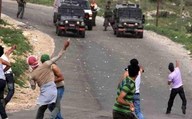
The Israeli occupation forces (IOF) at dawn Wednesday kidnapped a Palestinian minor, summoned a number of citizens for interrogation, and left others wounded in the clashes that rocked al-Khalil’s northern town of Beit Ummar.
Mohamed Awad, spokesperson for the popular committee against the wall in Beit Ummar, said the IOF rolled into the town in more than seven military jeeps and wreaked havoc on Palestinian family homes before they kidnapped the 15-year-old minor Wahid Abu Maria and summoned his father Sakr, 45, for interrogation.
The youngsters Nasr Ikhlil and Hasan Abu Hashem were also summoned for interrogation by the IOF in the process.
A number of unarmed protesters choked on tear gas grenades randomly unleashed by the IOF throughout the clashes that flared up in the town.
The IOF also summoned the brother of an ex-prisoner in al-Khalil’s town of Yatta for interrogation after having stormed the family’s home and ravaged it, coordinator for the anti-settlement committee Rateb al-Jabour told the PIC.
Mohamed Awad, spokesperson for the popular committee against the wall in Beit Ummar, said the IOF rolled into the town in more than seven military jeeps and wreaked havoc on Palestinian family homes before they kidnapped the 15-year-old minor Wahid Abu Maria and summoned his father Sakr, 45, for interrogation.
The youngsters Nasr Ikhlil and Hasan Abu Hashem were also summoned for interrogation by the IOF in the process.
A number of unarmed protesters choked on tear gas grenades randomly unleashed by the IOF throughout the clashes that flared up in the town.
The IOF also summoned the brother of an ex-prisoner in al-Khalil’s town of Yatta for interrogation after having stormed the family’s home and ravaged it, coordinator for the anti-settlement committee Rateb al-Jabour told the PIC.
|
|
Israeli military authorities have promoted on Tuesday a soldier who attacked and severely beat Palestinian children in al-Khalil.
A local human rights group affirmed that the Israeli soldier David Nahlawi was promoted after attacking a number of Palestinian children in Shuhada Street in the city of al-Khalil. Such racist acts would certainly encourage settlers' attacks and violations against Palestinians, the group said. In April 2014, a number of Palestinian children were subjected to a brutal attack and severe beating with rifle butts while on their way to their homes in al-Khalil. |
Israeli soldiers savagely attacked at that time journalists who were trying to cover the incident.
16 june 2015
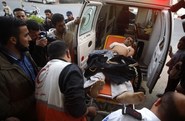
Israeli Occupation Forces (IOF) shot and injured a Palestinian man in northern Gaza Strip on Tuesday.
Israeli media sources revealed that the IOF soldiers shot and wounded a Palestinian young man who attempted to sneak into Kibbutz Zikim in the Negev just north of Gaza.
The forces arrested the young man after injuring him, the sources pointed out.
Young men in Gaza have recently increased attempts to infiltrate into 1948 occupied Palestine seeking jobs. Over one hundred of them have been rounded up by IOF soldiers since last November.
Israeli media sources revealed that the IOF soldiers shot and wounded a Palestinian young man who attempted to sneak into Kibbutz Zikim in the Negev just north of Gaza.
The forces arrested the young man after injuring him, the sources pointed out.
Young men in Gaza have recently increased attempts to infiltrate into 1948 occupied Palestine seeking jobs. Over one hundred of them have been rounded up by IOF soldiers since last November.
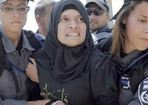
Israeli police officers kidnapped, Tuesday, two Palestinian women while leaving the Al-Aqsa Mosque, in occupied Jerusalem, and assaulted two elderly men.
A worker of the Islamic Endowment Department said the police kidnapped the two women while leaving the Al-Aqsa Mosque, through the al-Magharba Gate, and took them to a nearby police station.
He added that the police also assaulted two elderly men, identified as Abu Bakr ash-Sheemy and Abu Ali Shawahna, after they objected to the abduction of the two women.
The events transpired after a number of Israeli fanatics stormed the courtyards of the Al-Aqsa Mosque, and conducted provocative tours.
The WAFA News Agency said Israeli fanatics stormed the mosque area, in numerous smaller groups, under heavy police deployment.
Several women started chanting against the invading fanatics, and calling for protecting the Al-Aqsa Mosque, and holy sites, against the ongoing violations.
A worker of the Islamic Endowment Department said the police kidnapped the two women while leaving the Al-Aqsa Mosque, through the al-Magharba Gate, and took them to a nearby police station.
He added that the police also assaulted two elderly men, identified as Abu Bakr ash-Sheemy and Abu Ali Shawahna, after they objected to the abduction of the two women.
The events transpired after a number of Israeli fanatics stormed the courtyards of the Al-Aqsa Mosque, and conducted provocative tours.
The WAFA News Agency said Israeli fanatics stormed the mosque area, in numerous smaller groups, under heavy police deployment.
Several women started chanting against the invading fanatics, and calling for protecting the Al-Aqsa Mosque, and holy sites, against the ongoing violations.

Israeli soldiers kidnapped five Palestinians in the occupied West Bank, in addition to a woman and her son, while visiting her husband in the Eshil Israeli prison, and also kidnapped a physically challenged teen in Hebron, Monday.
Media sources in Jenin, in the northern part of the West Bank, said the soldiers invaded the Jenin refugee camp, broke into and searched several homes, causing excessive property damage, and kidnapped three Palestinians.
The soldiers hurled concussion grenades at the homes of the three Palestinians, and detonated their front doors before invading the properties.
The kidnapped Palestinians have been identified as Soheib Adnan al-Ghoul, 20, Farouq Salama, 21, and Yahia Balalwa, 20.
Soldiers also detained a young man, identified as Ahmad Mustafa al-Qneity, for a few hours before releasing him.
In addition, soldiers invaded Silwad town, east of the central West Bank city of Ramallah, broke into several homes and kidnapped a Palestinian teenager, identified as Abdul-Hamid Abdul-Nasser Hammad, 18.
The Palestinian Detainees Committee stated Tuesday that the soldiers also kidnapped a Palestinian child, identified as Ahmad Qassem al-Azraq, 14 years of age, from ‘Aida refugee camp in Bethlehem.
The Committee said the soldiers ordered the child, and his father, to head to the Etzion military base for interrogation, and kidnapped him, after accusing him of hurling stones on their vehicles.
Furthermore, soldiers kidnapped a Palestinian woman and her child, while visiting the detained father, imprisoned in the Eshil Israeli prison.
Media sources said the soldiers kidnapped Amina Khaled Manasra, and her child, while visiting her husband ‘Othman Salah, from the al-Khader town south of Bethlehem.
On Monday, the Detainees’ Committee said the soldiers kidnapped a disabled Palestinian teen, in the al-‘Arroub refugee camp, in Hebron.
The Committee said soldiers kidnapped Yahia Mohammad al-Hoor, 19, after invading his family home, approximately at two at dawn, and took him to the Etzion military base.
The teen suffers from a physical disability, in addition to being deaf and mute, and suffers from several health issues that require frequent treatment.
Media sources in Jenin, in the northern part of the West Bank, said the soldiers invaded the Jenin refugee camp, broke into and searched several homes, causing excessive property damage, and kidnapped three Palestinians.
The soldiers hurled concussion grenades at the homes of the three Palestinians, and detonated their front doors before invading the properties.
The kidnapped Palestinians have been identified as Soheib Adnan al-Ghoul, 20, Farouq Salama, 21, and Yahia Balalwa, 20.
Soldiers also detained a young man, identified as Ahmad Mustafa al-Qneity, for a few hours before releasing him.
In addition, soldiers invaded Silwad town, east of the central West Bank city of Ramallah, broke into several homes and kidnapped a Palestinian teenager, identified as Abdul-Hamid Abdul-Nasser Hammad, 18.
The Palestinian Detainees Committee stated Tuesday that the soldiers also kidnapped a Palestinian child, identified as Ahmad Qassem al-Azraq, 14 years of age, from ‘Aida refugee camp in Bethlehem.
The Committee said the soldiers ordered the child, and his father, to head to the Etzion military base for interrogation, and kidnapped him, after accusing him of hurling stones on their vehicles.
Furthermore, soldiers kidnapped a Palestinian woman and her child, while visiting the detained father, imprisoned in the Eshil Israeli prison.
Media sources said the soldiers kidnapped Amina Khaled Manasra, and her child, while visiting her husband ‘Othman Salah, from the al-Khader town south of Bethlehem.
On Monday, the Detainees’ Committee said the soldiers kidnapped a disabled Palestinian teen, in the al-‘Arroub refugee camp, in Hebron.
The Committee said soldiers kidnapped Yahia Mohammad al-Hoor, 19, after invading his family home, approximately at two at dawn, and took him to the Etzion military base.
The teen suffers from a physical disability, in addition to being deaf and mute, and suffers from several health issues that require frequent treatment.
With these words Qoteiba Sawafta, nine years of age, described the moment when the Israeli explosive object detonated as he picked it up, thinking it was a toy, causing severe burns to his face and various parts of his body.
“It was an unbearable, horrific scene,” the mother said, “I collapsed, fell onto the ground… the scene was something I cannot ever describe…”
“All of his body looked charred, with what appeared to be like nails or shrapnel covering his face and other parts of his body,” she added, “At first I thought a cooking gas jar exploded near him or an electric malfunction… I never thought it was a bomb.”
When the Israeli soldiers aren’t operating in the occupied West Bank, their dropped explosive objects are always there. The army frequently conducts live fire training in Palestinian communities, leaving behind very dangerous ordnance.
Sawafta was planning to spend the summer holiday in a summer camp with his friends and schoolmates, but he is now hospitalized with severe burns, in the al-Makassed Hospital in occupied Jerusalem.
A doctor treating Sawafta told the Maan News Agency that the child was hospitalized on June 4th, suffering burns on 30-40% of his body.
The devastated family is hoping that their child would be the last victim of the Israeli explosive objects and materials left behind by the military after training in large areas, especially in the Jordan Valley, and the southern part of the occupied West Bank.
The father said the family lives in the Northern Mountain Area in the Tubas District; an area with large spaces and the houses are not close to each other.
“We can practically see the entire district from where we live, whenever the army wants to invade the area, they come from a minor road close to our home,” he added, “They usually gather there, and then invade the area, maybe they dropped the explosive then; I don’t know… the army does a lot of things. They drop explosives, plant explosives…”
Official studies revealed that at least 250 Palestinians have been killed by unexploded Israeli ordnance left by the army Israel occupied the West Bank in 1967, while hundreds have been injured; dozens of them suffered permanent disabilities.
Mohammad Sayyad, of the Maan News Agent – Satellite TV Channel, conducted this televised report, in Arabic.
“It was an unbearable, horrific scene,” the mother said, “I collapsed, fell onto the ground… the scene was something I cannot ever describe…”
“All of his body looked charred, with what appeared to be like nails or shrapnel covering his face and other parts of his body,” she added, “At first I thought a cooking gas jar exploded near him or an electric malfunction… I never thought it was a bomb.”
When the Israeli soldiers aren’t operating in the occupied West Bank, their dropped explosive objects are always there. The army frequently conducts live fire training in Palestinian communities, leaving behind very dangerous ordnance.
Sawafta was planning to spend the summer holiday in a summer camp with his friends and schoolmates, but he is now hospitalized with severe burns, in the al-Makassed Hospital in occupied Jerusalem.
A doctor treating Sawafta told the Maan News Agency that the child was hospitalized on June 4th, suffering burns on 30-40% of his body.
The devastated family is hoping that their child would be the last victim of the Israeli explosive objects and materials left behind by the military after training in large areas, especially in the Jordan Valley, and the southern part of the occupied West Bank.
The father said the family lives in the Northern Mountain Area in the Tubas District; an area with large spaces and the houses are not close to each other.
“We can practically see the entire district from where we live, whenever the army wants to invade the area, they come from a minor road close to our home,” he added, “They usually gather there, and then invade the area, maybe they dropped the explosive then; I don’t know… the army does a lot of things. They drop explosives, plant explosives…”
Official studies revealed that at least 250 Palestinians have been killed by unexploded Israeli ordnance left by the army Israel occupied the West Bank in 1967, while hundreds have been injured; dozens of them suffered permanent disabilities.
Mohammad Sayyad, of the Maan News Agent – Satellite TV Channel, conducted this televised report, in Arabic.
15 june 2015
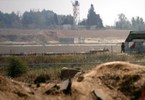
The Israeli Occupation Forces (IOF) opened their machine gun fire on Monday evening at Palestinian shepherds east of Zeitoun neighborhood to the east of Gaza City. No injuries were reported during the armed attack.
Local sources affirmed that Israeli fire deliberately targeted a number of Palestinian shepherds and a training site for Mujahideen Brigades.
Palestinian farmers are daily subjected to similar attacks while trying to have access to their agricultural lands along the eastern and northern border areas of Gaza Strip.
Local sources affirmed that Israeli fire deliberately targeted a number of Palestinian shepherds and a training site for Mujahideen Brigades.
Palestinian farmers are daily subjected to similar attacks while trying to have access to their agricultural lands along the eastern and northern border areas of Gaza Strip.
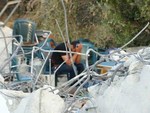
The Israeli occupation forces (IOF) at predawn time Monday knocked down a Palestinian home in Kafr Kanna town, in the 1948 Occupied territories.
Local media sources said the demolition was carried out at predawn hours. Clashes broke out as the house owners voiced their protest at Israel’s arbitrary demolition of their home for the second time.
The IOF knocked down the targeted building under the pretext of unlicensed construction, an excuse from which illegal Israeli settlers have always been exempted.
The Israeli cops nabbed four Palestinian citizens in the clashes that burst out shortly afterwards.
The IOF also attacked the locals with randomly-shot barrages of stun grenades and rubber bullets in an attempt to disband them.
Local media sources said the demolition was carried out at predawn hours. Clashes broke out as the house owners voiced their protest at Israel’s arbitrary demolition of their home for the second time.
The IOF knocked down the targeted building under the pretext of unlicensed construction, an excuse from which illegal Israeli settlers have always been exempted.
The Israeli cops nabbed four Palestinian citizens in the clashes that burst out shortly afterwards.
The IOF also attacked the locals with randomly-shot barrages of stun grenades and rubber bullets in an attempt to disband them.
14 june 2015
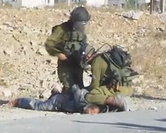
Video
Five soldiers court martialed over violent arrest of Palestinian demonstrator; prelimanary investigations reveal Palestinian tried to grab a soldier's weapon.
Two IDF soldiers who were documented beating a Palestinian man received a suspended sentence of 28 days in army prison on Sunday, while another soldier who was seen cursing was sentenced to 30 days confinement to the base. The company commander was reprimanded.
Five soldiers of the Haredi Netzah Yehuda Battalion, which secures the Ramallah area, were filmed forcibly arresting a Palestinian demonstrator in Friday's violent incident at the Jalazun refugee camp.
A preliminary investigation into the incident, which was caught on film by a Palestinian cameraman, suggested that the demonstrator tried to grab a rifle from one of the soldiers.
Questioning of forces on the ground revealed that the Palestinian, who appears at the beginning of the video with a cap on his head teasing the soldiers, attacked one of the soldiers physically and tried to steal his weapon. These actions were both missing from the video released by the Palestinians.
The incident occurred while dozens of Palestinians were throwing stones at the soldiers. One of the stones hit a platoon commander in the eye, leading to his hospitalization.
The battalion commander who was on the scene when the incident took place did not prevent the contentious action towards the Palestinians, and soldiers were heard cursing them and screaming: "Get the cameramen out of here."
Demonstrations take place on regular basis at Jalazun, usually on weekends, near the headquarters of the IDF's West Bank Division. The participants at the demonstrations are mainly children and teenagers who throw stones at soldiers near the settlement of Beit El, but these protests are usually not publicized, despite the fact that Palestinian photographers document them on a regular basis.
IDF forces are instructed to be wary of traps, distance themselves as much as possible from the center of disturbances, respond with riot control measures, and, if deemed necessary, fire at the lower extremities of key instigators.
The guidelines' purpose, apart from preventing demonstrators getting near Beit El, is to prevent Palestinians from succeeding in their effort to delegitimize Israel, which was achieved relatively easily over the weekend, regardless of the outcome of the internal IDF investigation.
At Friday's demonstration, unlike other regular demonstrations at Ni'lin, Bil'in and Nabi Salih, there were no IDF cameramen to document what took place.
The Netzach Yehuda Battalion arrived in the area a few months ago, after having left their permanent area near Jenin, a move made at the request of soldiers in order to prevent fatigue.
The West Bank Division, which oversees the battalion's activity in the sensitive sector, noted that so far there have been no exceptional incidents apart from the aforementioned incident.
Five soldiers court martialed over violent arrest of Palestinian demonstrator; prelimanary investigations reveal Palestinian tried to grab a soldier's weapon.
Two IDF soldiers who were documented beating a Palestinian man received a suspended sentence of 28 days in army prison on Sunday, while another soldier who was seen cursing was sentenced to 30 days confinement to the base. The company commander was reprimanded.
Five soldiers of the Haredi Netzah Yehuda Battalion, which secures the Ramallah area, were filmed forcibly arresting a Palestinian demonstrator in Friday's violent incident at the Jalazun refugee camp.
A preliminary investigation into the incident, which was caught on film by a Palestinian cameraman, suggested that the demonstrator tried to grab a rifle from one of the soldiers.
Questioning of forces on the ground revealed that the Palestinian, who appears at the beginning of the video with a cap on his head teasing the soldiers, attacked one of the soldiers physically and tried to steal his weapon. These actions were both missing from the video released by the Palestinians.
The incident occurred while dozens of Palestinians were throwing stones at the soldiers. One of the stones hit a platoon commander in the eye, leading to his hospitalization.
The battalion commander who was on the scene when the incident took place did not prevent the contentious action towards the Palestinians, and soldiers were heard cursing them and screaming: "Get the cameramen out of here."
Demonstrations take place on regular basis at Jalazun, usually on weekends, near the headquarters of the IDF's West Bank Division. The participants at the demonstrations are mainly children and teenagers who throw stones at soldiers near the settlement of Beit El, but these protests are usually not publicized, despite the fact that Palestinian photographers document them on a regular basis.
IDF forces are instructed to be wary of traps, distance themselves as much as possible from the center of disturbances, respond with riot control measures, and, if deemed necessary, fire at the lower extremities of key instigators.
The guidelines' purpose, apart from preventing demonstrators getting near Beit El, is to prevent Palestinians from succeeding in their effort to delegitimize Israel, which was achieved relatively easily over the weekend, regardless of the outcome of the internal IDF investigation.
At Friday's demonstration, unlike other regular demonstrations at Ni'lin, Bil'in and Nabi Salih, there were no IDF cameramen to document what took place.
The Netzach Yehuda Battalion arrived in the area a few months ago, after having left their permanent area near Jenin, a move made at the request of soldiers in order to prevent fatigue.
The West Bank Division, which oversees the battalion's activity in the sensitive sector, noted that so far there have been no exceptional incidents apart from the aforementioned incident.

The Israeli occupation forces (IOF) at dawn Sunday broke into the family home of the sick Palestinian detainee Salah al-Titi in al-Khalil while another army patrol moved into Nablus and inflamed clashes with locals.
The Palestinian Prisoner’s Society said in a statement the IOF troops wreaked havoc in al-Titi’s family home moments before they summoned his father, Ahmad Mohamed, for interrogation.
Wheelchaired al-Titi has been permanently hospitalized in al-Ramla prison clinic and is diagnosed with Intestinal atresia. He is currently serving a three-year sentence in Israeli lock-ups.
Meanwhile, limited clashes flared up in Nablus city between the heavily-armed IOF troops and a group of Palestinian unarmed protestors.
The IOF soldiers sealed off the central local market in Beita town, in southern Nablus, under the pretext they were hurled with stones.
The Palestinian Prisoner’s Society said in a statement the IOF troops wreaked havoc in al-Titi’s family home moments before they summoned his father, Ahmad Mohamed, for interrogation.
Wheelchaired al-Titi has been permanently hospitalized in al-Ramla prison clinic and is diagnosed with Intestinal atresia. He is currently serving a three-year sentence in Israeli lock-ups.
Meanwhile, limited clashes flared up in Nablus city between the heavily-armed IOF troops and a group of Palestinian unarmed protestors.
The IOF soldiers sealed off the central local market in Beita town, in southern Nablus, under the pretext they were hurled with stones.

Palestinian medical sources have reported that many residents have been injured, and one was kidnapped, late on Saturday at night, as Israeli soldiers invaded different neighborhoods, Silwan town, and the Shu’fat refugee camp, in occupied Jerusalem, leading to clashes with local youths.
Clashes took place close to the military roadblock leading to the Shu’fat refugee camp, and the soldiers fired dozens of gas bombs, concussion grenades, and rubber-coated metal bullets.
Many gas bombs also struck homes, causing scores of residents to suffer the effects of tear gas inhalation.
The Israeli army claimed some locals hurled Molotov cocktails, and empty bottles, at the military roadblock.
Clashes also took place in various neighborhoods in Silwan town, south of the Al-Aqsa Mosque, especially in Batn al-Hawa, and the Central Neighborhood; the soldiers fired dozens of gas bombs.
Israeli military sources said local youths tried to burn structures in two settlement outposts in Silwan.
In addition, soldiers invaded a home in Sur Baher village, southeast of Jerusalem, kidnapped a young man identified as Nour Hamada, and handed several members of his family military orders for interrogation.
Soldiers also invaded the Suwwana neighborhood, in Jerusalem, and clashed with scores of local youths, who hurled stones and empty bottles at the army, and the Beit Orit illegal outpost.
Clashes took place close to the military roadblock leading to the Shu’fat refugee camp, and the soldiers fired dozens of gas bombs, concussion grenades, and rubber-coated metal bullets.
Many gas bombs also struck homes, causing scores of residents to suffer the effects of tear gas inhalation.
The Israeli army claimed some locals hurled Molotov cocktails, and empty bottles, at the military roadblock.
Clashes also took place in various neighborhoods in Silwan town, south of the Al-Aqsa Mosque, especially in Batn al-Hawa, and the Central Neighborhood; the soldiers fired dozens of gas bombs.
Israeli military sources said local youths tried to burn structures in two settlement outposts in Silwan.
In addition, soldiers invaded a home in Sur Baher village, southeast of Jerusalem, kidnapped a young man identified as Nour Hamada, and handed several members of his family military orders for interrogation.
Soldiers also invaded the Suwwana neighborhood, in Jerusalem, and clashed with scores of local youths, who hurled stones and empty bottles at the army, and the Beit Orit illegal outpost.
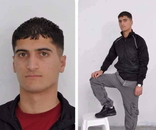
Abdullah Eyad Ghanayem, 22
Israeli soldiers invaded, on Sunday at dawn, Kafr Malek village, east of the central West Bank city of Ramallah. One Palestinian was shot, then crushed under an Israeli military vehicle, according to local sources.
Medical sources in Ramallah said the slain Palestinian has been identified as Abdullah Eyad Ghanayem, 22 years of age. He was killed at approximately 3:30 before dawn, and the army held his body until 7:30 in the morning.
The sources said Ghanayem was shot in his spine, in the lower back, and fell onto the ground, before a military vehicle flipped over him, the Maan News Agency said.
The soldiers said he hurled stones on their vehicle before they chased him; the soldiers left the jeep while the young man remain under it for more than an hour.
Eyewitnesses said Ghanayem was standing near his home when he was injured, while the soldiers were chasing local youths.
The death of the young man led to clashes between the soldiers and dozens of local youths. Several military vehicles invaded the village, and fired dozens of concussion grenades, gas bombs and rounds of live ammunition.
At least one Palestinian was shot with a live round, six others were shot by rubber-coated metal bullets, and scores of residents suffered the effects of tear gas inhalation.
Ghanayem is a former political prisoner; he was taken prisoner on September 12, 2012, and was released on March 8, 2014.
Israeli soldiers invaded, on Sunday at dawn, Kafr Malek village, east of the central West Bank city of Ramallah. One Palestinian was shot, then crushed under an Israeli military vehicle, according to local sources.
Medical sources in Ramallah said the slain Palestinian has been identified as Abdullah Eyad Ghanayem, 22 years of age. He was killed at approximately 3:30 before dawn, and the army held his body until 7:30 in the morning.
The sources said Ghanayem was shot in his spine, in the lower back, and fell onto the ground, before a military vehicle flipped over him, the Maan News Agency said.
The soldiers said he hurled stones on their vehicle before they chased him; the soldiers left the jeep while the young man remain under it for more than an hour.
Eyewitnesses said Ghanayem was standing near his home when he was injured, while the soldiers were chasing local youths.
The death of the young man led to clashes between the soldiers and dozens of local youths. Several military vehicles invaded the village, and fired dozens of concussion grenades, gas bombs and rounds of live ammunition.
At least one Palestinian was shot with a live round, six others were shot by rubber-coated metal bullets, and scores of residents suffered the effects of tear gas inhalation.
Ghanayem is a former political prisoner; he was taken prisoner on September 12, 2012, and was released on March 8, 2014.

